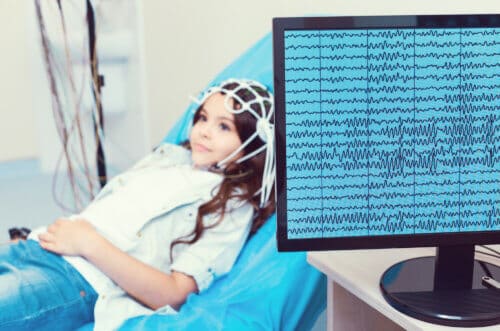The method, which is based on EEG patterns in abnormal electrical brain activity, can quickly diagnose and monitor pathologies in the blood vessels in the brain that are observed in conditions such as Alzheimer's disease, stroke, head injuries and psychiatric conditions

Researchers at Ben-Gurion University of the Negev have developed a new method for the rapid diagnosis of pathologies in the blood vessels in the brain that can cause degenerative diseases of the nervous system such as Alzheimer's disease, as well as neurological and psychiatric conditions, including epilepsy, head injuries and strokes. The new method is based on the analysis of EEG patterns with the help of unique algorithms, and was developed by Dr. Dan Milikowski and Prof. Alon Friedman, PhD, MD, Department of Physiology and Cell Biology and Department of Cognitive and Brain Sciences, Zolotovsky Center for Brain Research at Ben-Gurion University.
The new method is based on findings from Prof. Friedman's laboratory, according to which an abnormal activity pattern can be seen in the brains of Alzheimer's patients and other brain diseases that can be detected by EEG, an available recording method that measures electrical activity in the cerebral cortex. The study was published in the respected scientific journal Science Translational Medicine journal[I]. This abnormal activity can reflect pathological changes in the blood vessels of the brain, which, according to recent studies, contribute to the development of neurodegenerative diseases of the nervous system and other neuropsychiatric diseases.
Prof. Friedman explained, "Studies from our laboratory and other laboratories show that pathological changes in the blood vessels in the brain, and in particular damage to the blood-brain barrier, contribute to the development of Alzheimer's disease and other brain diseases. Since damage to the blood-brain barrier is also a key component in the pathology of epilepsy, we hypothesized that damage to the blood-brain barrier in Alzheimer's patients would also lead to abnormal electrical activity, which would be detectable in an EEG test, an accessible and inexpensive test that could be used as a diagnostic method for these conditions. Indeed, we see specific patterns in the EEG recordings, in many Alzheimer's patients as well as in epilepsy patients, which apparently reflect pathology of the blood vessels in the brain and can be used both for diagnosis and as monitoring of the course of the disease and the success of the treatment."
The technology has been proven to be effective in pre-clinical trials and has been successfully tested on dozens of patients and is now undergoing validation on large databases of EEG recordings from thousands of patients.
Josh Peleg, CEO Technologies BGN, said, "This new approach to diagnosing neurological conditions is based on the analysis of changes in the blood vessels in the brain and can be very valuable for the early detection of Alzheimer's disease and other neurological conditions, at stages where treatment can still slow down the progression of the disease. The technology provides a biomarker with immediate results and enables continuous monitoring of disease progression and response to treatment. We are now looking for a potential strategic partner to continue the development of this promising method that has a variety of applications, starting with monitoring intensive care patients, through patients after stroke and head injury, and ending with the diagnosis of vascular pathologies in the early stages of Alzheimer's disease."
[I] Milikovsky1 et al. (Dec. 2019), Paroxysmal slow cortical activity in Alzheimer's disease and epilepsy is associated with blood-brain barrier dysfunction. Science Translational Medicine: Vol. 11, Issue 521, eaaw8954.
More of the topic in Hayadan:

One response
Very cool.
Coming soon via smartphone.
Simple tools that measure environmental noises that translate into something valuable. Technology and artificial intelligence are used in the mix.
I was born in the 70s, so I probably won't get to enjoy the peak of these technologies myself, but my children probably will. magnificent.